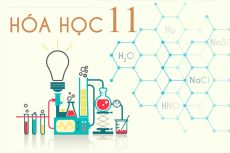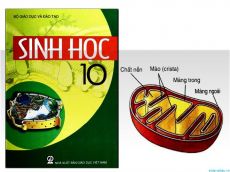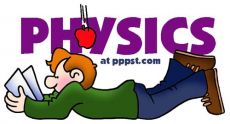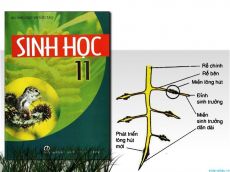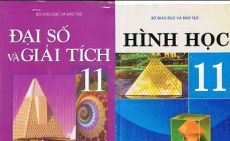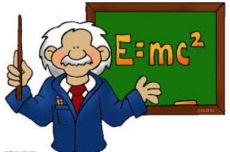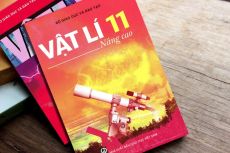Choose the word or phrase among A, B, C or D that best fits the blank space in the following passage:
"Before the 1960s, Singapore was essential a trading nation. Since (1)….. , it has developed a more (2)…. economy and has become an important financial, trade, and transportation center. Singapore has (3)….. banks, insurance, and finance companies, as (4) ….. as a stock exchange. Tourism is also important to the (5)…. of Singapore.
There is (6)…. unemployment in Singapore. The country’s annual income per capita (per person) is one of the (7) …. in Asia. The government of Singapore plays a major role in the country’s economy. For example, it (8)….. what benefits, such as vacation time and sick leave, must be (9)….for workers by employers. It also operates an employment agency to help people find jobs, and it provides (10)….. for retired workers."
7. The country’s annual income per capita (per person) is one of the (7) …. in Asia.
Hãy suy nghĩ và trả lời câu hỏi trước khi xem đáp án
Lời giải:
Báo saiĐáp án D
Dịch: Thu nhập bình quân đầu người hàng năm của quốc gia này là một trong những mức cao nhất ở Châu Á.
Câu hỏi liên quan
-
Read the following passage and mark the letter A, B, C, or D on your answer sheet to indicate the correct answer to each of the questions.
Contrary to popular belief, one does not have to be a trained programmer to work online. Of course, there are plenty of jobs available for people with high-tech computer skills, but the growth of new media has opened up a wide range of Internet career opportunities requiring only a minimal level of technical expertise. Probably one of the most well-known online job opportunities is the job of Webmaster. However, it is hard to define one basic job description for this position. The qualifications and responsibilities depend on what tasks a particular organization needs a Webmaster to perform.
To specify the job description of a Webmaster, one needs to identify the hardware and software the website the Webmaster will manage is running on. Different types of hardware and software require different skill sets to manage them. Another key factor is whether the website will be running internally or externally (renting shared space on the company servers). Finally, the responsibilities of a webmaster also depend on whether he or she will be working independently, or whether the firm will provide people to help. All of these factors need to be considered before one can create an accurate webmaster job description.
Webmaster is one type of Internet career requiring in-depth knowledge of the latest computer applications. However, there are also online jobs available for which traditional skills remain in high demand. Content jobs require excellent writing skills and a good sense of the web as a “new media”.
The term “new media” is difficult to define because it compasses a constantly growing set of new technologies and skills. Specifically, it includes websites, email, internet technology, CD-ROM, DVD, streaming audio and video, interactive multimedia presentations, e-books, digital music, computer illustration, video games, virtual reality, and computer artistry.
Additionally, many of today’s Internet careers are becoming paid-by-the-job professions. With many companies having to downsize in tough economic items, the outsourcing and contracting of freelance workers online has become common business practice. The Internet provides an infinite pool of buyers from around the world with whom freelancers can contract their services. An added benefit to such online jobs is that freelancers are able to work on projects with companies outside their own country.
How much can a person make in these kinds of careers? As with many questions related to today’s evolving technology, there is no simple answer. There are many companies willing to pay people with Internet skills salaries well over $70,000 a year. Generally, webmasters start at about $30,000 per year, but salaries can vary greatly. Freelance writers working online have been known to make between $40,000 to $70,000 a year.
Which of the followings is not mentioned as part of the “new media”?
-
Choose the item among A, B, C or D that best answers the question about the passage:
"When Franklin Roosevelt was elected President of the United States in 1932. not only the United States but also the rest of the world was in the throes of an economic depression. Following the termination of World War I, Britain and the United States at first experienced a boom in industry. Called the Roaring Twenties, the 1920s ushered in a number of things - prosperity, greater equality for women in the work world, rising consumption, and easy credit. The Outlook for American business was rosy.
October 1929 was a month that had catastrophic economic reverberation worldwide. The American stock market witnessed the “Great Crash,” as it is called, and the temporary boom in the American economy came to a standstill. Stock prices sank, and panic spread. The ensuing unemployment figure soared to 12 million by 1932.
Roosevelt was elected because he promised a “New Deal” to lift the United States out of the doldrums of the depression. Following the principles advocated to Keynes, a British economist, Roosevelt mustered the spending capacities of the federal government to provide welfare, work, and agricultural aid to the millions of down-and-out Americans. Roosevelt succeeded in dragging the nation out of the Depression before the outbreak of World War II."3. When Roosevelt was elected, …….
-
Are organically grown foods the best food choices? The advantages claimed for such foods over conventionally grown and marketed food products are now being debated. Advocates of organic foods - a term whose meaning varies greatly - frequently proclaim that such products are safer and more nutritious than others.
The growing interest of consumers in the safety and nutritional quality of the typical North American diet is a welcome development. However, much of this interest has been sparked by sweeping claims that the food supply is unsafe or inadequate in meeting nutritional needs.
Although most of these claims are not supported by scientific evidence, the preponderance of written material advancing such claims makes it difficult for the general public to separate fact from fiction. As a result, claims that eating a diet consisting entirely of organically grown foods prevents or cures disease or provides other benefits to health have become widely publicized and form the basis for folklore.
Almost daily the public is besieged by claims for “no-aging” diets, new vitamins, and other wonder foods. There are numerous unsubstantiated reports that natural vitamins are superior to synthetic ones, that fertilized eggs are nutritionally superior to unfertilized eggs, that untreated grains are better than fumigated grains, and the like.
One thing that most organically grown food products seem to have in common is that they cost more than conventionally grown foods. But in many cases consumers are misled if they believe organic foods can maintain health and provide better nutritional quality than conventionally grown foods. So there is real cause for concern if consumers, particularly those with limited incomes, distrust the regular food supply and buy only expensive organic foods instead.The “welcome development” mentioned in line 6 is an increase in ..........
-
Read the following passage and mark the letter A, B, C or D on your answer sheet to indicate the correct answer to each of the questions:
What unusual or unique biological train led to the remarkable diversification and unchallenged success of the ants for over 50 million years? The answer appears to be that they were the first group of predatory eusocial insects that both lived and foraged primarily in the soil and in rotting vegetation on the ground. Eusocial refers to a form of insect society characterized by specialization of tasks and cooperative care of the young; it is rare among insects. Richly organized colonies of the land made possible by eusociality enjoy several key advantages over solitary individuals.
Under most circumstances groups of workers are better able to forage for food and defend the nest, because they can switch from individual to group response and back again swiftly and according to need. When a food object or nest intruder is too large for one individual to handle, nestmates can be quickly assembled by alarm or recruitment signals. Equally important is the fact that the execution of multiple- step tasks is accomplished in a series-parallel sequence. That is, individual ants can specialize in particular steps, moving from one object (such as a larva to be fed) to another (a second larva to be fed). They do not need to carry each task to completion from start to finish - for example, to check the larva first, then collect the food, then feed the larva. Hence, if each link in the chain has many workers in attendance, a sense directed at any particular object is less likely to fail. Moreover, ants specializing in particular labor categories typically constitute a caste specialized by age or body form or both. There has been some documentation of the superiority in performance and net energetic yield of various castes for their modal tasks, although careful experimental studies are still relatively few.
What makes ants unusual in the company of eusocial insects is the fact that they are the only eusocial predators (predators are animals that capture and feed on other animals) occupying the soil and ground litter. The eusocial termites live in the same places as ants and also have wingless workers, but they feed almost exclusively on dead vegetation.The word "rotting" in paragraph 1 is closest in meaning to .
-
Read the following passage and mark the letter A, B, C or D on your answer sheet to indicate the correct answer to each of the questions:
Genetic modification of foods is not a new practice. It has been practiced for thousands of years under the name of "selective breeding". Animals and plants were chosen because they had traits that humans found useful. Some animals were larger and stronger than others, or they yielded more food, or they had some other trait that humans valued. Therefore, they were bred because of those traits. Individuals with those traits were brought together and allowed to breed in the hope that their offspring would have the same traits in greater measure.
Much the same thing was done with plants. To produce bigger or sweeter fruit, or grow more grain per unit of land, strains of plants were combined and recombined to produce hybrids, or crossbreeds that had the desired traits in the right combinations. All the while, however, biologists wondered: is there a more direct and versatile way to change the traits of plants and animals? Could we rewrite, so to speak, the heredity of organisms to make them serve our needs better?
In the 20th century, genetic modification made such changes possible at last. Now, it was possible to alter the genetic code without using the slow and uncertain process of selective breeding. It even became possible to blend plants and animals genetically: to insert animal genes into plants, for example, in order to give the plants a certain trait they ordinarily would lack, such as resistance to freezing. The result was a tremendous potential to change the very nature of biology.The word "them" in paragraph 2 refers to .
-
Read the following passage and mark the letter A, B, C or D on your answer sheet to indicate the correct answer to each of the questions:
In this modern world where closed-circuit television (CCTV) cameras are everywhere and smartphones in every pocket, the routine filming of everyday life is becoming pervasive. A number of countries are rolling out body cams for police officers; other public-facing agencies such as schools, councils and hospitals are also experimenting with cameras for their employees. Private citizens are getting in on the act too: cyclists increasingly wear headcams as a deterrent to aggressive drivers. As camera technology gets smaller and cheaper, it isn't hard to envisage a future where we're all filming everything all the time, in every direction.
Would that be a good thing? There are some obvious potential upsides. If people know they are on camera, especially when at work or using public services, they are surely less likely to misbehave. The available evidence suggests that it discourages behaviours such as vandalism. Another upside is that it would be harder to get away with crimes or to evade blame for accidents.
But a world on camera could have subtle negative effects. The deluge of data we pour into the hands of Google, Facebook and others has already proved a mixed blessing. Those companies would no doubt be willing to upload and curate our body-cam data for free, but at what cost to privacy and freedom of choice?
Body-cam data could also create a legal minefield. Disputes over the veracity and interpretation of police footage have already surfaced. Eventually, events not caught on camera could be treated as if they didn't happen. Alternatively, footage could be faked or doctored to dodge blame or incriminate others.
Of course, there's always the argument that if you're not doing anything wrong, you have nothing to fear. But most people have done something embarrassing, or even illegal, that they regret and would prefer they hadn't been caught on film. People already censor their social media feeds – or avoid doing anything incriminating in public – for fear of damaging their reputation. Would ubiquitous body cams have a further chilling effect on our freedom?
The always-on-camera world could even threaten some of the attributes that make us human. We are natural gossips and backbiters, and while those might not be desirable behaviours, they oil the wheels of our social interactions. Once people assume they are being filmed, they are likely to clam up.
The argument in relation to body-cam ownership is a bit like that for guns: once you go past a critical threshold, almost everyone will feel they need one as an insurance policy. We are nowhere near that point yet – but we should think hard about whether we really want to say "lights, body cam, action."It is stated in paragraph 4 that unrecorded events .
-
Increasing numbers of parents in the U.S. are choosing to teach their children at home. In fact, the U.S. Department of Education has estimated that in 1999, about 850,000 children were being homeschooled. Some educational experts say that the real number is double this estimate, and the ranks of homeschooled children seem to be growing at the average rate of about eleven percent every year.
At one time, there was a theory accounting for homeschooling: it was traditionally used for students who could not attend school because of behavioral or learning difficulties. Today, however, more parents are taking on the responsibility of educating their own children at home due to their dissatisfaction with the educational system. Many parents are unhappy about class size, as well as problems inside the classroom. Teacher shortages and lack of funding mean that, in many schools, one teacher is responsible for thirty or forty students. The children are, therefore, deprived of the attention they need. Escalating classroom violence has also motivated some parents to remove their children from school.Although there have been a lot of arguments for and against it, homeschooling in the U.S. has become a multi-million dollar industry, and it is growing bigger and bigger. There are now plenty of websites, support groups, and conventions that help parents protect their rights and enable them to learn more about educating their children. Though once it was the only choice for troubled children, homeschooling today is an accepted alternative to an educational system that many believe is failing.
The past participle “homeschooled” in the first paragraph is best equivalent to “_ at home”
-
Read the following passage and mark the letter A, B, C or D on your answer sheet to indicate the correct answer to each of the questions:
The ocean bottom - a region nearly 2.5 times greater than the total land area of Earth - is a vast frontier that even today is largely unexplored and uncharted. Until about a century ago, the deep-ocean floor was completely inaccessible, hidden beneath waters averaging over 3,600 meters deep. Totally without light and subjected to intense pressures hundreds of times greater than at the Earth's surface, the deep-ocean bottom is a hostile environment to humans, in some ways as forbidding and remote as the void of outer space.
Although researchers have taken samples of deep-ocean rocks and sediments for over a century, the first detailed global investigation of the ocean bottom did not actually start until 1968, with the beginning ofthe National Science Foundation's Deep Sea Drilling Project (DSDP). Using techniques first developed for the offshore oil and gas industry, the DSDP's drill ship, the Glomar Challenger, was able to maintain a steady position on the ocean's surface and drill in very deep waters, extracting samples of sediments and rock from the ocean floor.
The Glomar Challenger completed 96 voyages in a 15-year research program that ended in November 1983. During this time, the vessel logged 600,000 kilometers and took almost 20,000 core samples of seabed sediments and rocks at 624 drilling sites around the world. The Glomar Challenger's core samples have allowed geologists to reconstruct what the planet looked like hundreds of millions of years ago and to calculate what it will probably look like millions of years in the future. Today, largely on the strength of evidence gathered during the Glomar Challenger's voyages, nearly all earth scientists agree on the theories of plate tectonics and continental drift that explain many of the geological processes that shape the Earth.
The cores of sediment drilled by the Glomar Challenger have also yielded information critical to understanding the world's past climates. Deep-ocean sediments provide a climatic record stretching back hundreds of millions of years, because they are largely isolated from the mechanical erosion and the intense chemical and biological activity that rapidly destroy much land-based evidence of past climates. This record has already provided insights into the patterns and causes of past climatic change - information that may be used to predict future climates.The word “inaccessible” is closest in meaning to .
-
Read the following passage and choose the best answer for each blank.
Vietnam is considered a third world country, its people live (26) _____ poverty by the millions. After the (27) _____, Vietnam's economy remained dominated by small-scale production, low labor productivity, (28) _____, material and technological shortfalls, and insufficient food and (29) _____ goods. The Doi Moi reforms that were instated in 1986 have shed new light and added new features to the Vietnamese economy. (30) ____ Vietnamese Communist Party plays a leading role in establishing the foundations and principles of communism, mapping strategies for economic development, setting growth targets, and (31) _____ reforms. Doi Moi combined government planning with free-market incentives and (32) _____ the establishment of private businesses and foreign investment, including foreign-owned enterprises. By the late 1990s, the success of the business and agricultural reforms ushered in under Doi Moi was evident. (33) _____ than 30,000 private businesses had been created, and the economy was growing at an annual (34) _____ of more than 7 percent. Farming systems research and the international development projects are a source of new hope for the people of Vietnam. If these recent projects are successful and Doi Moi continues on its current path the Vietnamese people may (35) _____ a new standard of living. More reforms like Doi Moi need to take place in order to create a more stable Vietnamese future.
(27) _____
-
Read the following passage and mark the letter A, B, C, or D on your answer sheet to indicate the correct answer to each of the questions:
The problem of cardiac arrest has become a major problem these days. A lot of patients have acute pain after suffering from a stroke. There are plenty of medicines, surgical methods developed in the field of medicine to treat such cardiac problems. These solutions are time consuming and costly. In the process of rehabilitation, the medicines also have a lot of side effects on the human body and take time to give relief. Therefore, a lot of people go for alternative therapies that help in rehabilitation of patients who suffer from cardiac stroke. The alternative therapies help in relieving pain, stress and make the body healthy and fit through exercise, yoga as well as meditation.
Those who have the cardiac complaint have to take a good care of their diet.
Also, they must look after their regular exercise in order to stay fit and make sure that they do not take undue stress. These are some of the precautions that you need to take while you are in the process of rehabilitation. The cardiac rehabilitation can be carried out at the rehabilitation centers as well as at the residence of the patients. Once the patient learns all the exercise and techniques of meditation and understands what diet he or she should include in their meals as the instructions of the doctor’s and dieticians, then it is possible to accomplish the rehabilitation process at home with little guidance and monitoring. But the best results are seen at the center, where the program is given to a group of patients together.
The alternative therapies used for cardiac rehabilitation are stress management, physical exercises and diet. Stress management is very much essential in the rehabilitation process because it has a lot of effects on the patient’s body. A lot of relaxation techniques are taught to the patients that helps them in stress management, among them meditation is one of the main focuses.
The various rehabilitation programs also give you information on how to have a stress free lifestyle. The patients are supported and encouraged to discuss their problems with the counselor or fellow patients. This helps them to vent their feelings and feel comforted. Breathing exercises are also of great help for the patients who are undergoing cardiac rehabilitation.
In addition to stress management, physical exercises are also given a lot of importance in the rehabilitation program. The patients are asked to perform various forms of physical exercise which are suitable to them depending on their age and the severity of their problems. These activities include activities like walking, jogging, cycling, and some other sports like badminton, tennis etc., to maintain their health and keep their muscles, bones, and body tissues in a good state. Cardio exercise in a gymnasium is also encouraged. This helps in strengthening the muscles and managing weight.
The diet of these patients also needs to be looked upon very carefully. Such people should stay away from alcohol and tobacco consumption in order to improve their health. Make sure that their meals include plenty of organic foodstuffs as well as fruits and juices. Do not include junk and oily foodstuffs in your diet because they are very difficult to digest. The intake of calories should also be done at required level. It is a significant fact that the patients have to understand and work accordingly.The author mentions gymnasium in the passage to imply that
-
Read the following passage and mark the letter A, B, C, or D on your answer sheet to indicate the correct answer to each of the questions:
Scientists have experimented with a new procedure for alleviating the damage caused by strokes. Strokes are frequently caused by a blood clot lodging in the tree of arteries in the head, choking the flow of blood. Some brain cells die as a direct result of the stroke, but others also die over several hours because the proteins spilling out of the first cells that die trigger a chemical chain reaction that kills the neighboring cells.
The current method of reducing the amount of damage is to give a clot dissolver, known as TPA, as soon as possible. But generally TPA is not given to the patient until he or she reaches the hospital, and it still does not immediately stop the damage.
The new technology, still in the research stage, involves chilling the area or the entire patient. It is already known that when an organ is cooled, damage is slowed. This is why sometimes a person who has fallen into an icy pond is not significantly harmed after being warmed up again. The biggest issue is the method of cooling. It is not feasible to chill the head alone. Doctors have chilled the entire body by wrapping the patient in cold materials, but extreme shivering was a problem.
The new idea is to cool the patient from the inside out. Several companies are studying the use of cold-tipped catheters, inserted into the artery in the groin and threaded up to the inferior vena cava, which is a large vein that supplies blood to the abdomen. The catheter is expected to cool the blood that flows over it, thus allowing cooler blood to reach the area of the stroke damage.
It is not expected that the cooling will be substantial, but even a slight decrease in temperature is thought to be helpful. In effect, the patient is given a kind of forced hypothermia. And doctors believe it is important to keep the patient awake so that they can converse with the patient in order to ascertain mental condition.
Studies continue to determine the most effective and least damaging means of cooling the patient in order to reduce this damage.According to the passage, all of the following are true except that .
-
Read the following passage and mark the letter A, B, C, or D on your answer sheet to indicate the correct answer to each of the questions:
In young language learners, there is a critical period of time beyond which it becomes increasingly difficult to acquire a language. Children generally attain proficiency in their first language by the age of five and continue in a state of relative linguistic plasticity until puberty. [A] Neurolinguistic research has singled out the lateralization of the brain as the reason for this dramatic change from fluidity to rigidity in language function. Lateralization is the process by which the brain hemispheres become dominant for different tasks. The right hemisphere of the brain controls emotions and social functions, whereas the left hemisphere regulates the control of analytical functions, intelligence, and logic. [B] For the majority of adults, language functions are dominant on the left side of the brain. [C] Numerous studies have demonstrated that it is nearly impossible to attain a nativelike accent in a second language, though some adults have overcome the odds, after lateralization is complete. [D]
Cognitive development also affects language acquisition, but in this case adult learners may have some advantages over child learners. Small children tend to have a very concrete, here- and-now view of the world around them, but at puberty, about the time that lateralization is complete, people become capable of abstract thinking, which is particularly useful for language. Generally speaking, adults can profit from grammatical explanations, whereas children cannot. This is evidenced by the fact that children are rather unreceptive to correction of grammatical features and instead tend to focus on the meaning of an utterance rather than its form. However, language learning theory suggests that for both adults and children, optimal language acquisition occurs in a meaning centered context. Though children have the edge over adult language learners with respect to attaining a nativelike pronunciation, adults clearly have an intellectual advantage which greatly facilitates language learning.Which of the following would be the best title for the passage?
-
Read the following passage and choose the best answer for each blank.
Vietnam is considered a third world country, its people live (26) _____ poverty by the millions. After the (27) _____, Vietnam's economy remained dominated by small-scale production, low labor productivity, (28) _____, material and technological shortfalls, and insufficient food and (29) _____ goods. The Doi Moi reforms that were instated in 1986 have shed new light and added new features to the Vietnamese economy. (30) ____ Vietnamese Communist Party plays a leading role in establishing the foundations and principles of communism, mapping strategies for economic development, setting growth targets, and (31) _____ reforms. Doi Moi combined government planning with free-market incentives and (32) _____ the establishment of private businesses and foreign investment, including foreign-owned enterprises. By the late 1990s, the success of the business and agricultural reforms ushered in under Doi Moi was evident. (33) _____ than 30,000 private businesses had been created, and the economy was growing at an annual (34) _____ of more than 7 percent. Farming systems research and the international development projects are a source of new hope for the people of Vietnam. If these recent projects are successful and Doi Moi continues on its current path the Vietnamese people may (35) _____ a new standard of living. More reforms like Doi Moi need to take place in order to create a more stable Vietnamese future.
(30) _____
-
Read the following passage and mark the letter A, B, C or D on your answer sheet to indicate the correct answer to each of the questions:
Public holidays in the United Kingdom, commonly referred to as bank holidays, are days where most businesses and non – essential services are closed although an increasing number of retail businesses (especially the larger ones) do open on some of the public holidays. There are restrictions on trading on Sundays and Christmas Day. Four public holidays are common to all countries of the United Kingdom. These are: New Year's Day, the first Monday in May, Christmas Day, and Boxing Day. Some banks open on some bank holidays. In Scotland, while New Year's Day and Christmas Day are national holidays, other bank holidays are not necessarily public holidays, since the Scots instead observe traditional local customs and practice for their public holidays. In Northern Ireland, once again, bank holidays other than New Year's
Day and Christmas Day are not necessarily public holidays. Good Friday and Christmas Day are common law holidays, except in Scotland, where they are bank holidays. In Scotland the holiday on 1 January (or 2 January if 1 January is Sunday) is statutory, and 25 December is also a statutory holiday (or 26 December if Christmas Day falls on a Sunday). Boxing Day is a holiday traditionally celebrated the day following Christmas Day, when servants and tradesmen would receive gifts, known as a "Christmas box", from their bosses or employers. Today, Boxing Day is the bank holiday that generally takes place on 26 December. And 28 December only is given if Boxing Day is Saturday.
Like Denmark, the United Kingdom has no national day holiday marked or celebrated for its formal founding date. Increasingly, there are calls for public holidays on the patron saints' days in England, Scotland and Wales. An online petition sent to the Prime Minister received 11,000 signatures for a public holiday in Wales on St. David's Day; the Scottish Parliament has passed a bill creating a public holiday on St. Andrew's Day although it must be taken in place of another public holiday; campaigners in England are calling for a bank holiday on St. George's Day; and in Cornwall, there are calls for a public holiday on St. Piran's Day.Read the following passage and mark the letter A, B, C or D on your answer sheet to indicate the correct answer to each of the questions:
Public holidays in the United Kingdom, commonly referred to as bank holidays, are days where most businesses and non – essential services are closed although an increasing number of retail businesses (especially the larger ones) do open on some of the public holidays. There are restrictions on trading on Sundays and Christmas Day. Four public holidays are common to all countries of the United Kingdom. These are: New Year's Day, the first Monday in May, Christmas Day, and Boxing Day. Some banks open on some bank holidays. In Scotland, while New Year's Day and Christmas Day are national holidays, other bank holidays are not necessarily public holidays, since the Scots instead observe traditional local customs and practice for their public holidays. In Northern Ireland, once again, bank holidays other than New Year's
Day and Christmas Day are not necessarily public holidays. Good Friday and Christmas Day are common law holidays, except in Scotland, where they are bank holidays. In Scotland the holiday on 1 January (or 2 January if 1 January is Sunday) is statutory, and 25 December is also a statutory holiday (or 26 December if Christmas Day falls on a Sunday). Boxing Day is a holiday traditionally celebrated the day following Christmas Day, when servants and tradesmen would receive gifts, known as a "Christmas box", from their bosses or employers. Today, Boxing Day is the bank holiday that generally takes place on 26 December. And 28 December only is given if Boxing Day is Saturday.
Like Denmark, t -
Read the following passage and mark the letter A, B, C, or D on your answer sheet to indicate the correct answer to each of the questions:
A small but growing group of scholars, evolutionary psychologists, are beginning to sketch the contours of the human mind as designed by natural selection. Some of them even anticipate the coming of a field called “mismatch theory”, which would study maladies resulting from contrasts between the modern environment and the “ancestral environment”. The one we were designed for.There is no shortage of such maladies to study. Rates of depression have been doubling in some industrial countries roughly every 10 years. Suicide is the third most common cause of death among young adults, after car wrecks and homicides.
Evolutionary psychology is a long way from explaining all this with precision, but it is already shedding enough light to challenge some conventional wisdom. It suggests, for example, that the nostalgia for the nuclear family of the 1950s is in some way misguided that the model family of husband at work and wife at home is hardly a “natural” and the healthful living arrangement, especially for the wives. Moreover, the by gone lifestyles that do look fairly by commercialism. Perhaps the biggest surprise from evolutionary psychology is it depiction of the “animal” is us. Freud, and various thinkers since, saw “civilization” as an oppressive force that thwarts basic animal instincts and urges and transmutes them into psychopathology. However, evolutionary psychology suggests that a large threat to mental health may be the way civilization thwarts civility. There is a gentler, kinder side of human nature, and it seems increasingly to be a victim of repression in modern society.Which of the following is the theory that evolutionary psychologists forecast about its appearance?
-
Fill in each numbered blank with one suitable word or phrase.
In 1986 Vietnam (1)_____ a political and economic innovation campaign (Doi Moi) that introduced reforms intended to facilitate the transition from a centralized economy to a “socialist-oriented market economy”. Doi Moi combined government planning with free-market incentives. The program abolished agricultural (2) _____, removed price controls on agricultural goods, and enabled farmers to sell their goods in the marketplace. It encouraged the establishment of private businesses and foreign investment, including foreign-owned (3) _____.
By the late 1990s, the success of the business and agricultural (4) _____ ushered in under Doi Moi was evident. More than 30,000 private businesses had been (5) _____, and the economy was growing at an annual rate of more than 7 percent. From the early 1990s to 2005, poverty (6) _____ from about 50 percent to 29 percent of the population. However, progress varied geographically, with most prosperity concentrated in urban areas, (7) _____ in and around Ho Chi Minh City. In general, rural areas also made progress, as rural households (8) _____ in poverty declined from 66 percent of the total in 1993 to 36 percent in 2002. (9) _____ contrast, concentrations of poverty remained in (10) _____ rural areas, particularly the northwest, north-central coast, and central highlands. Government control of the economy and a nonconvertible currency have protected Vietnam from what could have been a more severe impact resulting from the East Asian financial crisis in 1997.
(2)_____
-
In addition to the great ridges and volcanic chains, the oceans conceal another form of undersea mountains: the strange guyot, or flat-topped seamount. No marine geologist even suspected the existence of these isolated mountains until they were discovered by geologist Harry H. Hess in 1946.
He was serving at the time as naval officer on a ship equipped with a fathometer. Hess named these truncated peaks for the nineteenth-century Swiss-born geologist Arnold Guyot, who had served on the faculty of Princeton University for thirty years. Since then, hundreds of guyots have been discovered in every ocean but the Arctic. Like offshore canyons, guyots present a challenge to oceanographic theory. They are believed to be extinct volcanoes. Their flat tops indicate that they once stood above or just below the surface, where the action of waves leveled off their peaks. Yet today, by definition, their summits are at least 600 feet below the surface, and some are as deep as 8,200 feet. Most lie between 3,200 feet and 6,500 feet. Their tops are not really flat but slope upward to a low pinnacle at the center. Dredging from the tops of guyots has recovered basalt and coral rubble, and that would be expected from the eroded tops of what were once islands. Some of this material is over 80 million years old. Geologists think the drowning of the guyots involved two processes: The great weight of the volcanic mountains depressed the sea floor beneath them, and the level of the sea rose a number of times, especially when the last Ice Age ended, some 8,000 to 11,000 years ago.According to the passage, most guyots are found at a depth of ..............
-
Iron production was revolutionized in the early eighteenth century when coke was first used instead of charcoal for refining iron ore. Previously the poor quality of the iron had restricted its use in architecture to items such as chains and tie bars for supporting arches, vaults, and walls. With the improvement in refining ore, it was now possible to make cast-iron beams, columns, and girders. During the nineteenth century further advances were made, notably Bessemer’s process for converting iron into steel, which made the material more commercially viable.
Iron was rapidly adopted for the construction of bridges, because its strength was far greater than that of stone or timber, but its use in the architecture of buildings developed more slowly. By 1800 a complete internal iron skeleton for buildings had been developed in industrial architecture replacing traditional timber beams, but it generally remained concealed. Apart from its low cost, the appeal of iron as a building material lay in its strength, its resistance to fire, and its potential to span vast areas. As a result, iron became increasingly popular as a structural material for more traditional styles of architecture during the nineteenth century, but it was invariably concealed.
Significantly, the use of exposed iron occurred mainly in the new building types spawned by the Industrial Revolution: in factories, warehouses, commercial offices, exhibition hall, and railroad stations, where its practical advantages far outweighed its lack of status. Designers of the railroad stations of the new age explored the potential of iron, covering huge areas with spans that surpassed the great vaults of medieval churches and cathedrals. Paxton’s Crystal Palace, designed to house the Great Exhibition of 1851, covered an area of 1.848 feet by 408 feet in prefabricated units of glass set in iron frames. The Paris Exhibition of 1889 included both the widest span and the greatest height achieved so far with the Halle Des Machines, spanning 362 feet, and the Eiffel Tower 1,000 feet high. However, these achievements were mocked by the artistic elite of Paris as expensive and ugly follies. Iron, despite its structural advantages, had little aesthetic status. The use of an exposed iron structure in the more traditional styles of architecture was slower to develop.According to the passage, iron was NOT used for beams, columns, and girders prior to the early eighteenth century because ...........
-
Read the following passage and mark the letter A, B, C, or D on your answer sheet to indicate the correct word or phrase that best fits each of the numbered blanks.
MAKING THE MOST OF YOUR TIME
These days we are under pressure to increase the amount of work we can achieve in the shortest time. The pace of life threatens to leave many of us behind, and (1)........ of this pressure we spend time looking for short-cuts in our working lives. However, these time-saving measures may actually cause more problems than they solve.
Some organisations seem to expect staff to work more than the usual eight hours, without recognising the fact that tiredness causes people to make silly mistakes and leads to (2)......... working practices. Try setting clear (3)......... in your everyday work, however, you must be careful that these are not unrealistic and can be achieved within the working day. We tend to (4)......... people who can multi-task because we think they are working hard – but do all the electronic gadgets they use increase their efficiency in the long run? Instead, they may distract them from the task in hand and cause a loss of concentration. Maybe (5)........... with every email or mobile phone call immediately is not the best use of anyone’s time. To sum up, my advice is to keep everything simple, and prioritise tasks - you will become happier at work – and so will your boss!
(3)...............................
-
Read the following passage and mark the letter A, B, C or D on your answer sheet to indicate the correct answer to each of the questions:
Washington was the first city in history to be created solely for the purpose of governance. Following the Revolution, members of Congress had hotly debated the question of a permanent home for themselves and for those departments – the Treasury, the Patent Office and so on – which even the sketchiest of central governments would feel obliged to establish. In 1790, largely in order to put an end to congressional bickering, George Washington was charged with selecting a site for the newly designated federal district. Not much to anyone’s surprise but to the disappointment of many he chose a tract of land on the banks of the Potomac River, a few miles upstream from his beloved plantation Mount Vernon.
The District of Columbia was taken in part from Virginia and in part from Maryland. At the time it was laid out, its hundred square miles consisted of gently rolling hills, some under cultivation and the rest heavily wooded, with a number of creeks and much swampy land along the Potomac. There is now a section of Washington that is commonly referred to as Foggy Bottom; that section bore the same nickname a hundred and eighty years ago.
Two ports cities, Alexandria and Georgetown, flourished within sight of the new capital and gave it access by ship to the most important cities of the infant nation – Charleston, Baltimore, Philadelphia, New York, Newport, Salem and Portsmouth – and also to the far-off ports of England and the Continent.Read the following passage and mark the letter A, B, C or D on your answer sheet to indicate the correct answer to each of the questions:
Washington was the first city in history to be created solely for the purpose of governance. Following the Revolution, members of Congress had hotly debated the question of a permanent home for themselves and for those departments – the Treasury, the Patent Office and so on – which even the sketchiest of central governments would feel obliged to establish. In 1790, largely in order to put an end to congressional bickering, George Washington was charged with selecting a site for the newly designated federal district. Not much to anyone’s surprise but to the disappointment of many he chose a tract of land on the banks of the Potomac River, a few miles upstream from his beloved plantation Mount Vernon.
The District of Columbia was taken in part from Virginia and in part from Maryland. At the time it was laid out, its hundred square miles consisted of gently rolling hills, some under cultivation and the rest heavily wooded, with a number of creeks and much swampy land along the Potomac. There is now a section of Washington that is commonly referred to as Foggy Bottom; that section bore the same nickname a hundred and eighty years ago.
Two ports cities, Alexandria and Georgetown, flourished within sight of the new capital and gave it access by ship to the most important cities of the infant nation – Charleston, Baltimore, Philadelphia, New York, Newport, Salem and Portsmouth – and also to the far-off ports of England and the Continent.Read the following passage and mark the letter A, B, C or D on your answer sheet to indicate the correct answer to each of the questions:
Washington was the first city in history to be created solely for the purpose of governance. Following the Revolution, members of Congress had hotly debated the question of a permanent home for themselves and for those departments – the Treasury, the Patent Office and so on – which even the sketchiest of central governments would feel obliged to establish. In 1790, largely in order to put an end to congressional bickering, George Washington was charged with selecting a site for the newly designated federal district. Not much to anyone’s surprise but to the disappointment of many he chose a tract of land on the banks of the Po



